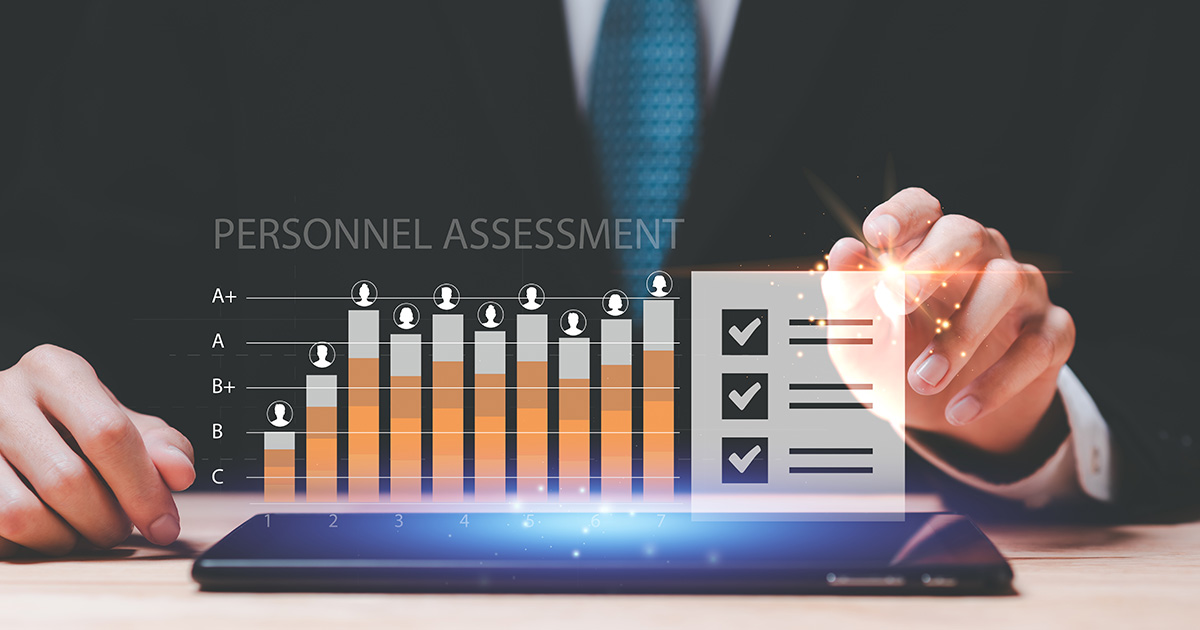
360 Degree Evaluation System: Comprehensive Feedback Platform
Collect multi-directional feedback with 360 degree evaluation system. AI-powered word mapping analysis, open-ended questions and objective performance evaluation guide.

The biggest drawback of traditional performance evaluation systems is being limited by the subjectivity of a single perspective. An evaluation made from a manager's viewpoint may not fully reflect the employee's real performance in daily work relationships. This is where the 360 degree evaluation system comes into play.
360 degree evaluation is a feedback methodology that evaluates employee performance and competencies from multiple perspectives. Modern digital platforms further strengthen this process with secure, anonymous and AI-powered analyses.
What is 360 Degree Evaluation?
360 degree evaluation gets its name from receiving feedback from all directions around the employee. Unlike traditional top-down evaluation, this methodology adopts a multi-source approach.
"360 degree evaluation assesses an employee not just by what they do, but how they do it. Behavioral competencies, work relationships and team dynamics become visible."
4 Main Feedback Sources
Self-Assessment
Employee's perception about their own performance and competencies. Critical for self-awareness measurement.
Manager Evaluation
Direct supervisor's perspective. Focuses on goal achievement, work quality and development areas.
Peer Evaluation
Observations from colleagues at the same level. Evaluates collaboration, communication and team contribution.
Subordinate Evaluation
Critical for managers. Measures leadership style, mentorship and team management skills.
360 Degree Evaluation in 2025: Digital Transformation
Traditional 360 degree evaluations were done with paper-based surveys and manual data collection methods. However, modern organizations in 2025 need digital, AI-powered and real-time evaluation platforms.
Advantages of Digital Platforms
Modern digital platforms are transforming the 360 degree evaluation process:
- Online Data Collection: Automatic online forms for feedback collection instead of paper surveys and manual data entry.
- AI-Powered Analysis: Word mapping and theme analysis with artificial intelligence instead of manual reading of open-ended responses.
- Instant Reporting: Real-time results and dashboard instead of 2-4 week reporting period.
- GDPR Compliant Security: Encrypted and fully anonymous feedback system instead of limited anonymity protection.
- Automatic Benchmark: Department and position-based comparative analyses instead of manual calculations.
360 Degree Evaluation with TestEd: Step by Step Process
Modern digital platforms simplify and automate the 360 degree evaluation process. Here's the 6-step process with TestEd:
Competency Determination
Define competencies and behavioral indicators to be evaluated. You can select from 500+ ready competencies from TestEd's competency library or add custom competencies.
Mixed Test Design
Create mixed tests combining Likert scale (1-5) and open-ended questions. With mixed test system, you can collect both quantitative and qualitative data.
Evaluator Selection
Determine 6-8 evaluators for each employee (1 manager, 3-4 peers, 2-3 subordinates). System automatically creates anonymous invitation links and sends via email/SMS.
Feedback Collection
Evaluators complete the test in 10-15 minutes. Risk score system detects abnormal behavior, ensuring data quality.
AI-Powered Analysis
Open-ended responses are automatically processed, word mapping is created. Most frequently used words, positive/negative themes and team perception are visualized.
Reporting and Action
Individual development reports, department comparisons and manager dashboards are instantly ready. Turn into action with development analytics.
TestEd's Unique Feature: AI-Powered Word Mapping Analysis
The most valuable part of 360 degree evaluations is open-ended questions. However, manually reading and analyzing hundreds of textual responses is both time-consuming and subjective. TestEd's AI-powered word mapping analysis solves this problem.
How Does Word Mapping Analysis Work?
1. Automatic Text Processing: System collects all open-ended responses, analyzes with language processing algorithm.
2. Word Frequency Calculation: Most frequently used words and word groups are identified.
3. Sentiment Analysis: Positive, negative and neutral expressions are categorized.
4. Word Cloud Visualization: Words are shown on visual map according to frequency level.
5. Theme Grouping: Responses with similar content are automatically themed.
6. Sample Quotes: Representative quotes are suggested for each theme.
For example, in a 360 degree evaluation for a manager, suppose 25 different responses were received to the open-ended question "What characteristic do you most appreciate?" Word mapping analysis automatically detects that the word "empathetic" appears 12 times and "supportive" appears 9 times and visualizes them.
Most Frequently Used Competencies in 360 Degree Evaluation
Behavioral and leadership competencies are typically measured in 360 degree evaluations. Here are the most commonly used competency categories:
Communication Skills
- Active listening
- Clear expression
- Written communication
- Presentation ability
Teamwork
- Collaboration
- Conflict management
- Knowledge sharing
- Common goal focus
Leadership
- Vision building
- Team motivation
- Decision making
- Development support
Problem Solving
- Analytical thinking
- Creative solutions
- Prioritization
- Quick action
360 Degree Evaluation Reports: What Does It Include?
Modern platforms report 360 degree evaluation results at 3 levels. Each report type addresses a different target audience and enables different actions.
1. Individual Development Report (For Employee)
Content:
- Competency-based scores (self-assessment vs others comparison)
- Strengths and development areas
- Word mapping (positive and development-required themes)
- Sample quotes (anonymous)
- Personalized development recommendations
- Benchmark: Department and position comparison
2. Manager Dashboard (For Leader)
Content:
- Team overall competency map
- High performer vs low performer analysis
- Critical development gaps (gap analysis)
- Succession planning recommendations
- Team dynamics insights (collaboration scores)
- Action recommendations (training, coaching, rotation)
3. HR Strategic Report (For C-Level)
Content:
- Organizational competency level (overall score)
- Cross-departmental comparison
- Leadership pipeline status
- Talent risk analysis (flight risk)
- Training ROI recommendations
- Trend analysis (comparison with previous periods)
360 Degree Evaluation Implementation Recommendations
The most important points to consider for successful 360 degree evaluation:
Best Practices
- Guarantee Anonymity: Evaluators must be assured their identities will be protected. Otherwise you won't get honest feedback.
- Be Development-Focused: 360 degree evaluation should not be used in promotion or salary decisions. It should be emphasized that it's for development purposes only.
- Sufficient Number of Evaluators: For reliable results, there should be minimum 5-6 evaluators (1 manager, 3 peers, 2 subordinates).
- Don't Forget Open-Ended Questions: Likert scale alone is not enough. Open-ended questions provide the most valuable insights.
- Turn Results Into Action: Create and track development plans so reports don't gather dust on shelves.
- Repeat Periodically: Measure development by repeating 1-2 times per year. Data-driven development requires continuous measurement.
Tip: If implementing 360 degree evaluation for the first time, start with a pilot study. Test with a group of 10-15 people, optimize the process, then roll out to the entire organization.
Systems Integrated with 360 Degree Evaluation
Modern HR technologies work integrated with each other to provide more powerful insights. 360 degree evaluation results can be combined with these systems:
Performance Management
Combined with OKR, KPI and goal achievement metrics to create comprehensive performance view.
LMS (Learning Platform)
Automatic training recommendations for development areas. Integration with digital measurement.
Talent Management
Provides critical data for talent pool and succession planning.
HR Analytics
Serves as data source for organizational insights and predictive analytics.
Success Stories: ROI of 360 Degree Evaluation
How is the return on investment of 360 degree evaluation measured? Here are examples from real cases:
Case 1: Technology Company (250 employees)
Situation: High manager turnover (30% annual), low employee satisfaction
Action: 360 degree evaluation with TestEd + leadership development program
Result (12 months): Manager turnover dropped to 12%, engagement score increased by 35%, leadership competency score rose from average 3.2 to 4.1.
Case 2: Retail Chain (1200 employees)
Situation: Inconsistent store manager performance, subjective promotion decisions
Action: 360 degree evaluation twice a year + objective promotion criteria
Result (18 months): Promotion satisfaction increased from 65% to 88%, store performance increased by 18%, wrong promotion rate decreased by 40%.
These cases show that properly implemented 360 degree evaluation systems improve both employee satisfaction and business results. When combined with training ROI measurement, the impact becomes even stronger.
Frequently Asked Questions
What is a 360 degree evaluation system?
A 360 degree evaluation system is a feedback methodology that evaluates employees' performance and competencies from multiple perspectives. The evaluation process collects feedback from 4 main sources: the employee themselves (self-assessment), direct manager, colleagues, and subordinates (if applicable). This multi-source approach eliminates the subjectivity of a single perspective, providing a more objective and balanced performance view. It's an ideal tool for leadership evaluation.
How is a 360 degree evaluation conducted?
360 degree evaluation is conducted in 6 steps: 1) Determining competency and behavior criteria, 2) Selecting evaluator pool (manager, peer, subordinate), 3) Mixed test design (Likert scale + open-ended questions), 4) Anonymous feedback collection, 5) AI-powered data analysis and word mapping, 6) Preparation of individual and team reports. Modern platforms automate and securely manage this process. TestEd's solutions cover the entire process.
How are open-ended questions analyzed?
TestEd's AI-powered word mapping analysis automatically processes hundreds of textual feedback from open-ended questions. The system identifies frequently used words, separates positive and negative themes, creates word cloud visualizations. This allows you to quickly understand team perception and development areas without manual reading. Review open-ended question analysis details.
How often should 360 degree evaluation be conducted?
Depending on the annual performance cycle, 360 degree evaluation is typically conducted 1-2 times per year. Some organizations prefer quarterly evaluations, but there is a risk of survey fatigue. The ideal approach is 1 comprehensive 360 degree evaluation per year + pulse surveys in between. In leadership development programs, it can be applied twice at the beginning and end points. Track periodically with department-based measurement.
Should 360 degree evaluation be anonymous?
Yes, anonymity is critical for the success of 360 degree evaluation. Evaluators provide more honest and constructive feedback when they know their identities will remain confidential. However, manager evaluation is typically done openly as it is a natural part of performance management. TestEd platform provides anonymous feedback collection and reporting in compliance with GDPR. Data-driven promotion systems require this trust.
What are the unique features of TestEd's 360 degree evaluation platform?
TestEd's 360 degree evaluation platform offers 3 unique features: 1) Combining Likert scale and open-ended questions in the same test with Mixed Test System, 2) Automatically processing open-ended responses with AI-powered word mapping analysis, 3) Department and position-based comparison reports. Evaluation security is ensured with risk score system, development tracking with periodic measurement. Discover AI-powered test platform features.






Make Performance Visible with 360 Degree Feedback
Want to evaluate employee potential from multiple perspectives? Discover TestEd's AI-powered 360 degree evaluation platform.
Explore Platform